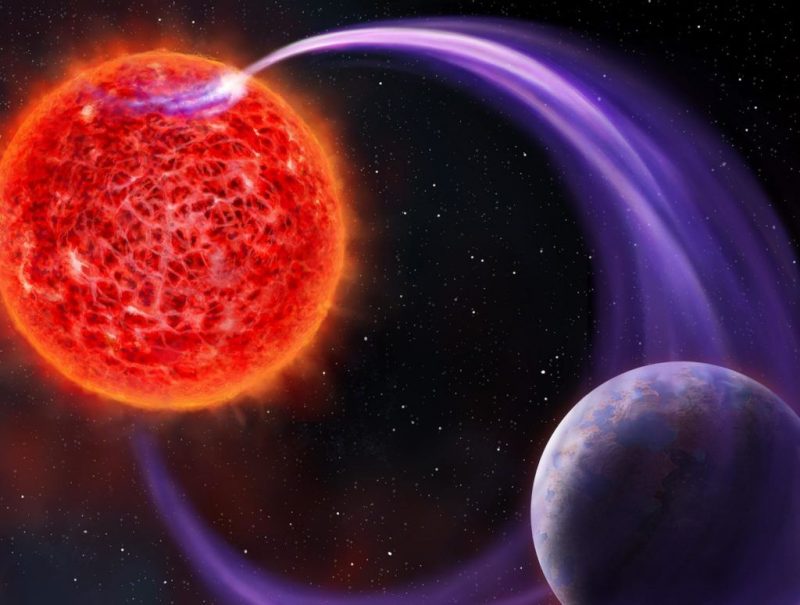
19 new exoplanet candidates
Astronomers said on October 11, 2021, that they believe they’ve detected 19 hidden exoplanets, or planets orbiting distant stars. They found these exoplanet candidates through the planets’ interactions with their parent stars, which are small, dim red dwarfs. Joseph Callingham of Leiden University led this new research. He said:
We’ve long known that the planets of our own solar system emit powerful radio waves as their magnetic fields interact with the solar wind. This same process drives the beautiful auroras we see at the poles of Earth.
Likewise, these scientists believe, the red dwarf stars they studied are driving a magnetic connection, and subsequent auroras, on the 19 previously unknown planets. The process is producing radio waves, which these scientists detected using the Low Frequency Array (LOFAR) Telescope in the Netherlands. The peer-reviewed journal Nature published their study on October 11, 2021. Additionally, a second paper from these scientists appeared on October 11 in the peer-reviewed Astrophysical Journal Letters.
Astronomers first thought they’d detected a planet via its radio waves in 2020. It was thought to be orbiting a star named GJ1151. They believe that the radio signals they are detecting occur in much the same way as Earth and Jupiter emit radio waves due to the interaction of their magnetic fields with the solar wind.
And now they have many more candidates to confirm.
Understanding our solar system helps find hidden planets
Co-author Harish Vedantham of the Netherlands Institute for Radio Astronomy (Astron) explained that they deduced the existence of the hidden planets from understanding how planets in our own solar system create radio waves. Vedantham said:
Our own Earth has auroras, commonly recognized here as the northern and southern lights. These beautiful auroras also emit powerful radio waves. This is from the interaction of the planet’s magnetic field with the solar wind. But in the case of auroras from Jupiter, they’re much stronger, as its volcanic moon Io is blasting material out into space, filling Jupiter’s environment with particles that drive unusually powerful auroras. Our model for this radio light from our stars is a scaled-up version of Jupiter and Io, with an exoplanet enveloped in the magnetic field of a star, feeding material into vast currents that similarly power bright auroras on the star itself. It’s a spectacle that has attracted our attention from light-years away.
Scientists created the following video after the 2020 discovery of radio waves from GJ1151. It how interaction between the red dwarf star and planet create radio waves and auroras.
Future searches for hidden planets
The next step for these scientists is to confirm the existence of the suspected planets. To do this, they will make optical observations along with looking for periodicity in the radio signals. Callingham explained:
The radio light should turn on and off like a lighthouse, and we hope to see that periodicity in new LOFAR data.
LOFAR can detect signals from up to 165 light-years away. A new telescope slated for 2029, the Square Kilometer Array, will extend that reach. Astronomers predict that with the new Square Kilometer Array they’ll be able to see hundreds of target stars out to much greater distances.
Bottom line: Scientists have discovered 19 possible hidden planets. They detected these candidates when they found radio waves they believe are from red dwarf stars interacting with exoplanets.
Source: The population of M dwarfs observed at low radio frequencies











